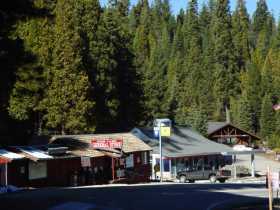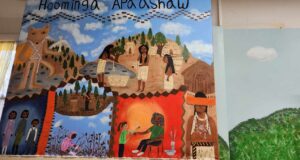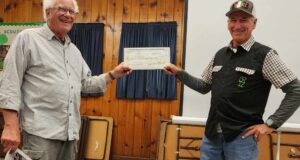Just outside of the South entrance to Yosemite National Park at 5602 ft elevation is the quiet town of Fish Camp. The 2010 census states that there are only 59 people living there. But this sleepy little town certainly does play host to an immense number of guests.
As you might expect, because of its proximity to the park, thousands of people travel from countless communities, states and countries each year. They stay at the lodges or inns, rent a cabin tucked in amongst the local residents, and camp, ski, sled, snowboard, ice skate, play in the snow, fish, hike, hit the trails on horseback, or ride “The Logger”. Plus, for generations back, valley school children have been visiting Camp Green Meadows to learn about wildlife, and conservation from the Camp Naturalist – for some it’s their first experience visiting the mountains.
At one time amenities at Fish Camp included the Summerdale Hotel, a general store, saloon, post office and a barn where it is reported dances were held seven days a week. You will still find it a great place to put your feet up after a long day exploring Yosemite National Park and the surrounding National Forests and Wilderness Areas. Still offering gracious hospitality, Fish Camp invites visitors to relax in the comfortable Narrow Gauge Inn, enjoy a quiet stay at one of several Bed and Breakfasts, or experience the mountain resort atmosphere of the Tenaya Lodge.
The Yosemite Mountain Sugar Pine Railroad, just south of town, is owned and operated by the second generation of the Stauffer family and offers daily rides through the Sierra National Forest in vintage steam locomotives during the summer. The “Logger” (as it is affectionately referred to) is not to be missed. Hearing the sound of the whistle of an old steam locomotive echoing off the mountains near Fish Camp is something that never gets old. It harkens back to a bygone era that can still be experienced at the Railroad.
Other attractions close to Fish Camp include: Bass Lake, Sugar Pine, Nelder Grove of Giant Sequoias, Fresno Dome, Soquel, Calvin Crest Camp and Retreat, Miami Trails off-road vehicle trails as well as many other accessible camping, picnicking and wilderness areas.
History
Fish Camp was established by timber claim in1881, filed by Albert Philip. It has also been known as Happy Camp and Berry’s Fish Camp.




